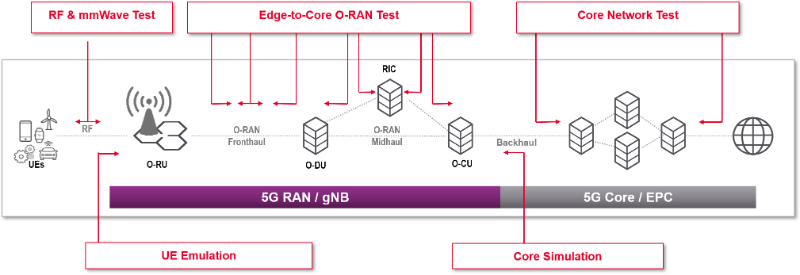
The Common Link Between O-RAN and 2008 Thriller Vantage Point
Remember Vantage Point, the fast-paced thriller movie that came out in 2008? If not, or if you did not watch it, it was a political film about the assassination of the president of the United States in Spain viewed from the perspective of different characters including a studio executive, a service agent, and the president himself. The concept was unique and memorable, but what does this have to do with open radio access network (O-RAN)? Well, a lot in fact. Let me explain.
The O-RAN movement is taking the mobile communications industry by storm. In two short years, the number of companies that have joined the O-RAN Alliance, the organization driving the specifications for the O-RAN standards, has grown to over 260. This movement is sparking RAN innovation by opening the market to newcomers. Server companies, chipset makers, and cloud vendors are all looking to participate in the O-RAN market. Virtualization is also bringing a new set of players like VMware and Red Hat.
O-RAN disrupts the mobile ecosystem by disaggregating the components of the radio access network (RAN) and evolving it towards virtualization. Key components in an O-RAN network include radio units (O-RU), distributed units (O-DU), central units (O-CU), and RAN intelligent controllers (RIC). Each element connects to others via open interfaces. The fronthaul interface connects O-RUs to O-DUs, the midhaul F1 interface connects O-DUs and O-CUs, and O-DUs and O-CUs also connect to the RICs through the E2 interface, as pictured in Figure 1.

Figure 1. Key components of an O-RAN network
Ensuring O-RAN network performance requires all these elements to interoperate seamlessly. Like in Vantage Point, these elements must be tested from all perspectives. For example, the O-DU needs to work seamlessly with all other RAN elements – O-RU, O-CU, and RICs. You need to test the DU from three different angles and vice versa.
Interoperability between O-DUs and O-RUs in the fronthaul part of the network is especially challenging. The high flexibility in management plane (M-plane) implementation requires the simulation of multiple behaviors from different radio units. Also, there are more than 6,000 parameters helping manage radio units, with less than 3% mandatory.
The bring-up sequence is another challenge. Some distributed units stop working if the radio unit behaves differently from what they expect. The breadth of implementations for the control and user planes (C-plane and U-plane) and their mapping also change depending on the radio unit type. O-DUs are designed to work with a specific O-RU type, beamforming model, and compression rate. These units also need to be tightly synchronized to enable time division duplexing (TDD), multiple-input / multiple output (MIMO), and multi-RU carrier aggregation.
In this video, Jose Chandy, senior management for software development at Keysight, demonstrates how to test O-DU and O-CU combinations over the eCPRI fronthaul interface using Keysight’s software-driven RU simulator RuSIM.
As mentioned earlier, though, the testing goes both ways. You will also need a DU emulator to test the other elements O-DUs interact with. With Keysight DU emulator DuSIM, for example, you can validate O-CU functionality, performance, and conformance over the midhaul F1 interface.
For more information on O-RAN solutions and how-to videos, visit www.keysight.com/find/ORAN.